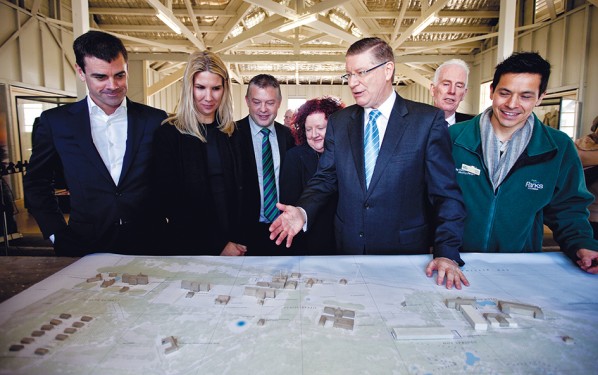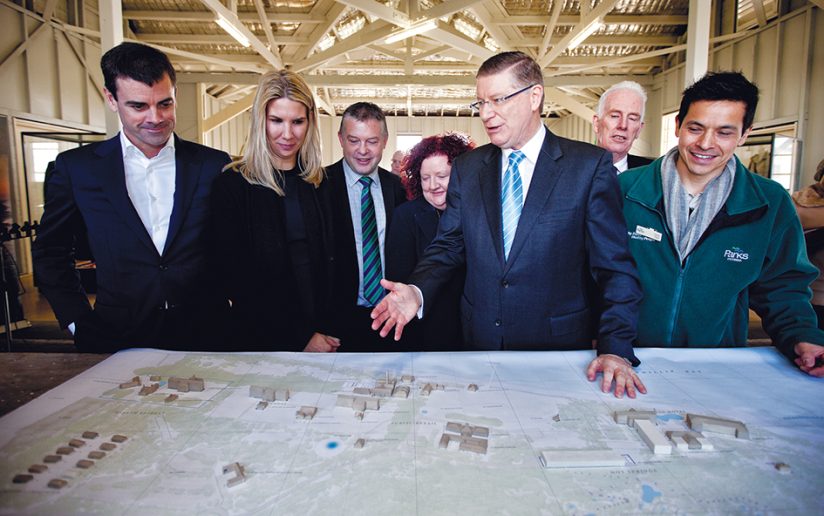 THE state government is under fire over secrecy surrounding an agreement for a major commercial development with Point Nepean National Park.
THE state government is under fire over secrecy surrounding an agreement for a major commercial development with Point Nepean National Park.
The Nepean Conservation Group and Nepean Historical Society has accused the government of keeping the community “in the dark” on critical details of the plan which includes a 99-year lease over the Point Nepean Quarantine Station to a Portsea property developer.
And the National Parks Association of Victoria is “deeply concerned” about the creation of a “private enclave” within the national park.
It says the public will have to pay to use most of the “facilities and activities” in the $100 million plan proposed by the Point Leisure Group with “no information [being given] about the amounts to be paid or any assessment of social or economic impacts”.
Mornington Peninsula Shire has also voiced misgivings about the plan and said time for public comment was too short.
When at Point Nepean to unveil the plan in July, the Premier Dennis Napthine described the development as “a world-class tourist destination and education precinct”.
The plan by the Point Leisure Group – run by Myer family members Richard and Trine Shelmerdine – includes a hotel, thermal pools and spa, a health and wellness centre, accommodation including both luxury and camping styles, shops, cafes, restaurants and a heritage museum and jetty.
“The proposal is in keeping with the site’s cultural and Indigenous heritage, while delivering stringent environmental protections,” Dr Napthine said.
The government invited public feedback on the proposal but has given no guarantees of making any changes.
Submissions must be in by 1 October.
“We never thought we’d have to re-fight this, it’s terrible, really,” long time campaigner for the preservation of Point Nepean and a former member of the federal government-appointed Point Nepean Community Group, Ursula De Jong said.
Now heading the Nepean Conservation Group, Ms De Jong said the government had invited comments from “anyone who could be affected” by the Special Use Zone 5 proposed for Point Nepean.
“Everyone in Victoria is affected,” she said. “The national park belongs to everyone in the state.”
Ms De Jong said the government “plans effectively to excise a large area – not yet determined – from Point Nepean National Park. And that its preferred developer Point Leisure Group has proposed an exclusive luxury health, wellbeing and geothermal spa retreat that ignores the values of the national park and will deny public access to many areas of the park”.
The community fought for nearly two decades for an integrated national park at Point Nepean but this latest proposal “further separates the Quarantine Station from the national park”.
Ms De Jong said the new planning zone removed environmental significance overlays, amendments to the park management plan and third party appeal rights to VCAT.
“The new zone allows future subdivision. It puts the Minister for the Environment [Ryan Smith] in charge of both the town planning decisions and the requirements under the National Parks Act, which as minister he can override. He is also in charge of lease length and conditions.”
Doreen Parker, president of the Nepean Historical Society, said the Point Leisure Group was “paying lip service” to the historical values of the Quarantine Station and “even airbrushed out reference to the name Quarantine Station by calling its development The Point”.
“The government’s consultation ends on 1 October. After that, all decisions about development of the quarantine station will be made behind closed doors between the property developer and the government,” Ms Parker said.
“One of those decisions may be to subdivide the land, an action that will be enabled under the government’s planning processes and made much easier if the property developer is granted the 99-year lease. It’s as good as selling off the Point Nepean Quarantine Station.”
VNPA executive director Matt Ruchel said there was a “a huge risk that once one new development occurs, or private operators obtain exclusive access, developments will continue to grow, especially if they are within a 99-year lease period”.
“Ninety-nine years is a very long time, effectively equating to private ownership. And any current regulations or restrictions applying to the development are unlikely to be honoured over that time: the lease period would extend for more than 24 [state] election cycles.”
The VNPA lists its “key issues” with the plan as being:
* It is creating a protected area for property developers, not protecting a national park for people and natural and cultural heritage.
* These are dramatic changes which ride roughshod over many longstanding planning processes accepted as essential by the community and governments, such as third party appeals to VCAT.
* It puts the Environment Minister in charge of both development planning and the national park, creating an untenable conflict of interest and obligation.
* It not only opens up parks for development, but significantly and unnecessarily fast- tracks what should be carefully considered processes.
“It essentially makes it easier to get approval for a development in a national park than on adjacent private land, and lacks any clear process for assessing ecological impacts on the local environment and in the national park as whole,” Mr Ruchel said.




